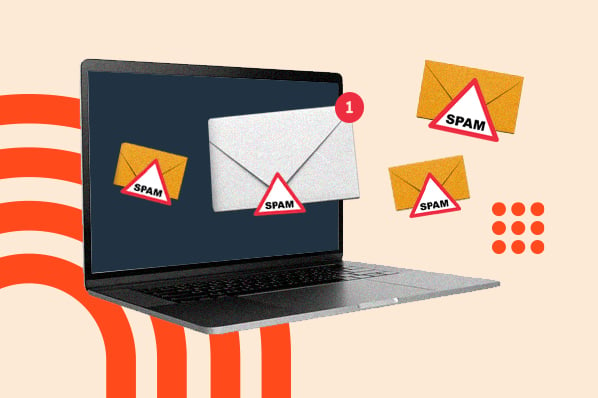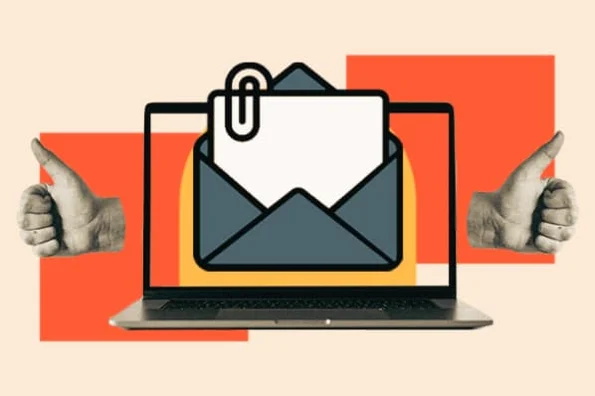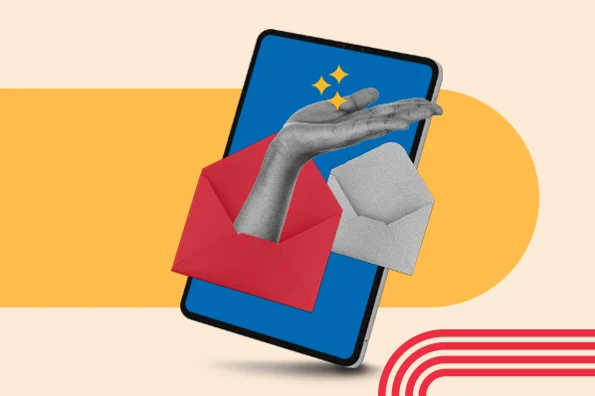To collect your Sender Score, Return Path gathers data from over 60 million mailboxes at big ISPs like BellSouth and Comcast. They record if people frequently unsubscribe or report spam from certain email senders, and then assign you a Sender Score based on that monitoring.
It's a crucial number to stay on top of, because mail servers will often check your Sender Score before deciding what to do with your emails. The lower your Sender Score, the harder time you'll have getting into someone's inbox. There are plenty of things that can impact the deliverability of your email, but Return Path reports that 83% of the time an email is not delivered to an inbox, it is due to a poor sender reputation.
Even if an email network or ISP doesn't query your Sender Score to determine whether they will deliver your email, the factors used in determining your Sender Score are similar to those used by email networks and ISPs to determine your sender reputation. As such, the score is a great, free email sender reputation tool to ensure you are aware of and have the opportunity to fix any deliverability problems.
Domain reputation and IP reputation are just a few of the considerations that are used to determine your overall Sender Score. Other characteristics include spam complaints, industry blacklists, and more.
Now that we know a little more about how your Sender Score is determined, let's learn how to check your score.
Checking your Sender Score is actually an easy process. Use the steps below to get started.
1. Go to SenderScore.org.

To get started, go to the SenderScore.org home page.
2. Click "Get Your Score."
Then, click the "Get Your Score" button in the middle of the page.
3. Input your IP address and contact information.
Next, fill out the form on the page.
As Sender Score is a free email reputation evaluation service from Return Path by Validity, you'll have instant access to detailed reputation reports and other free tools.
Sender Score provides an indication of the trustworthiness of an email sender’s IP address. Mailbox providers evaluate the reputation of senders to determine whether to deliver messages into the inbox.

4. Submit.
Lastly, click "Submit" and find out your Sender Score.
Once you know what your score is, you might be wondering, "What do I do with this information?" Below, let's dive into how to interpret your score.
How Do I Interpret My Score?
To check your Sender Score, visit Return Path's registration page, and you'll soon have a report that looks something like this (but with different data, of course!)
 Scores are calculated on a rolling, 30-day average and represent the rank of an IP address against other IP addresses, much like a percentile ranking.
Scores are calculated on a rolling, 30-day average and represent the rank of an IP address against other IP addresses, much like a percentile ranking.
The closer your score is to 0, the worse it is, and if you're close to 100 like Return Path is in this sample report, well you're in pretty great shape! Now let's break down what each of the items you're being scored on in this report mean:
- Complaints: How complaints about that IP address compare to all other IP addresses. Complaint rates are calculated as complaints divided by accepted mail, and complaint scores are a rank based on your complaint rates.
- Volume: While not an indication of a good or bad sender reputation alone, it is an important part of the overall reputation algorithm. For example, an IP address which sends 100 messages and receives 99 complaints is problematic, while an IP address which sends 100,000 messages and receives 99 complaints is probably okay. A higher score equates to larger volume monitored by the Sender Score Reputation Network.
- External Reputation: How the IP address compares to all other IP addresses on a variety of external blacklists and whitelists.
- Unknown Users: The rank of the IP address' unknown user rate compared to all other IP addresses. Unknown user rates are taken directly from incoming SMTP logs of participating ISPs, tracking how often an IP address attempts to send a message to an address which does not exist.
- Rejected: This represents how often messages are bounced compared to other IP addresses.
- Accepted: The number of email messages accepted for delivery, this number is expressed as the number of messages seen minus the number of messages rejected.
- Accepted Rate: The ratio of email messages accepted for delivery compared to email messages attempted. This is the number of messages accepted for delivery, divided by the number of messages seen.
- Unknown User Rate: The ratio of unknown users, or invalid email addresses, compared to the amount of email seen.
So, what's a good score? If your score is over 80, congratulations! That's a very good Sender Score. If your score is between 70 and 80, something isn't right -- move on to the next section of this blog post to see what you could be doing wrong that's impacting your email deliverability. If your score is less than 70, well ... you need to repair your sender reputation.
What Do I Do If I Have a Bad Sender Score?
The first step is knowing, so good job on checking your score. It can take weeks or months to fix a low Sender Score, so the sooner you're aware of the problem, the better. There are several aspects of your email marketing that you need to check and possibly change to improve your Sender Score and email delivery rates -- here are the ones that Sender Score takes into serious account:
- Inconsistent Volume of Email Sends: See the graph in the top right corner of the Sender Score report? Their email send volume goes up at a pretty steady rate, and as a result, their score maintains a pretty even number. However, if you were to send 5,000 emails on Monday, 200 on Friday, nothing for a week, and then suddenly another 15,000, you would likely get dinged for sending inconsistent volumes of emails.
- Frequency of Sends: Just as the volume of sends should be consistent, so should the frequency with which you email recipients. Email every day, every other day, every week -- whatever your needs are. Just make sure you don't jump on the email marketing bandwagon, abandon it after a month, then hop back on and expect no deliverability penalties. As you perfect your email marketing machine, you'll be able to test the optimal email sending frequency for your recipients.
- Cold IP Address: If you're new to email marketing, you may have neglected to warm up your IP address. Start email marketing on a new IP address with small batches of the best people on your email list -- you know, the ones who love you and won't mark you as SPAM or unsubscribe from your communications. Progressively increase the amount of people you email to warm up your IP and prove you're a safe sender.
- Being Blacklisted: There are about 50 known blacklists out there that denote which IPs are spammers. Return Path has a service that lets you see if you're on a blacklist. Assuming you're a legitimate email marketer who just didn't know some of the rules for good email deliverability, visit the sites of those who have blacklisted you to consult their information for being removed from their blacklist. If you contact them for removal, they will help you understand why you were blacklisted in the first place and what you can do to improve your email marketing methods.
- Getting Caught in a Spam Trap: A spam trap is an email address that was once valid, but no longer is, and will thus garner a hard bounce notice when you email them. However, when a mail server sees consistent traffic going to the dead email, they can turn the email into a spam trap that will stop returning a hard bounce for the known bad address, and instead accept the message and report the sender as a spammer. The moral of the story here is, if you're not monitoring your hard bounces and removing them from your active email list, you could be perceived as a spammer.
- SPAM reports: Finally, if your email recipients think you're a spammer and identify you as such via a SPAM report, your sender reputation is going to suffer. Check the rate at which your emails are marked as SPAM -- an acceptable rate is 1 in every 1000.
There are several other factors to getting your email into a recipient's inbox -- the content of your email, email infrastructure, recipients' personal filtering preferences -- more of which you can learn about in this email post about email deliverability.
Additionally, if you're looking to start email marketing on the right food, consider taking HubSpot's course on "Understanding Email Deliverability."
To be successful with your email marketing, you need to build trust with the people receiving your emails. To build trust, you need to provide value. And to provide value, you need to know how your emails are performing to a healthy email deliverability strategy.
Editor's note: This post was originally published in February 2012 and has been updated for comprehensiveness.
Email Deliverability
.png?width=112&height=112&name=Image%20Hackathon%20%E2%80%93%20Vertical%20(84).png)


![Why email whitelisting is important for marketers [+ detailed steps on how to do it]](https://53.fs1.hubspotusercontent-na1.net/hubfs/53/%5BUse%20(1).webp)



![How to Bypass the Toughest Email Spam Filters [Infographic Checklist]](https://53.fs1.hubspotusercontent-na1.net/hubfs/53/marketer%20getting%20email%20past%20spam%20filter.jpg)

![4 Easy Steps to Get a Custom Email Domain [+ Key Features to Look For]](https://53.fs1.hubspotusercontent-na1.net/hubfs/53/custom-email-domain.jpg)

![Email Deliverability: 5 Quick & Effective Ways to Increase It [+IG]](https://53.fs1.hubspotusercontent-na1.net/hubfs/53/email-deliverability-1.jpg)
